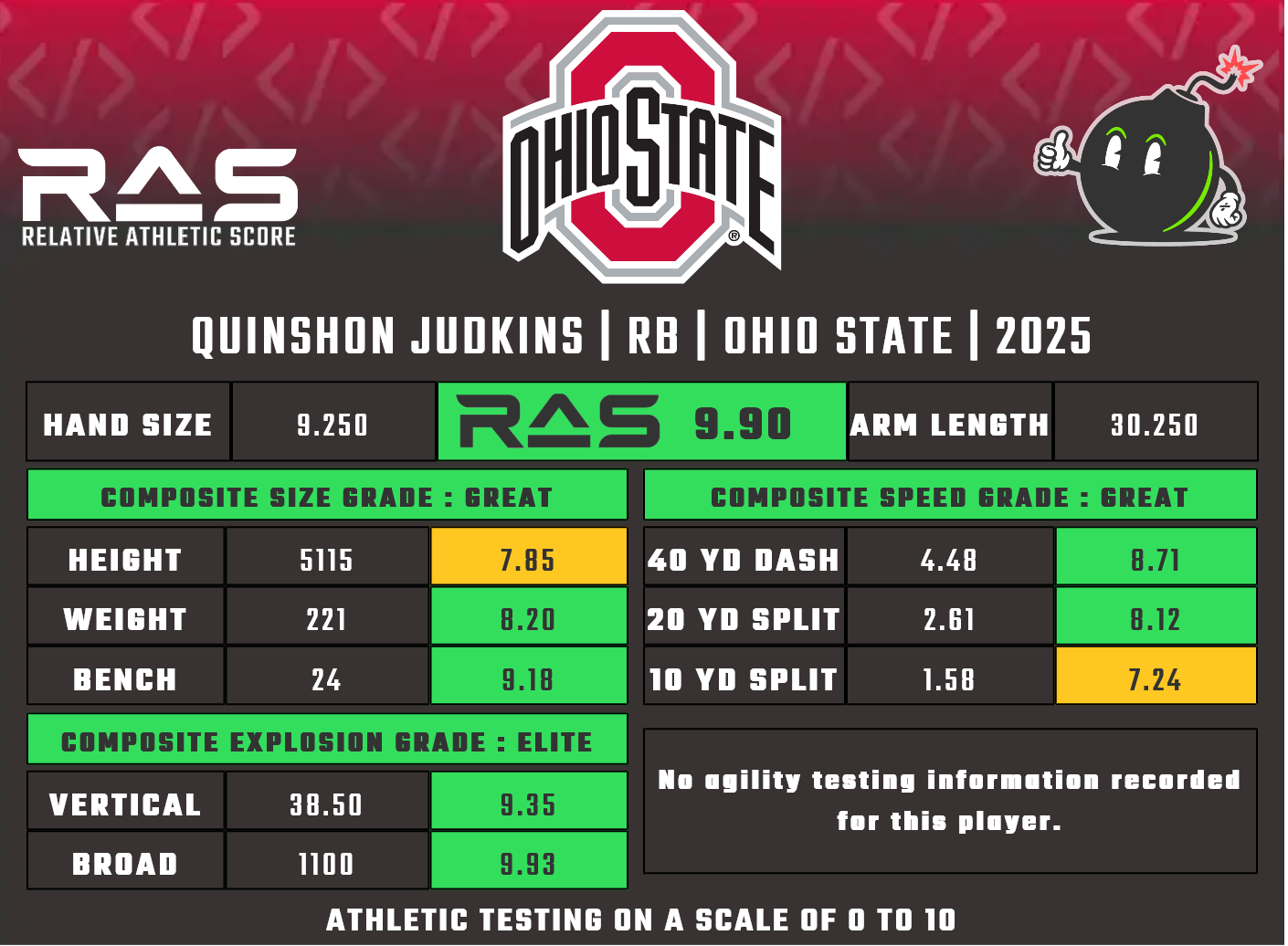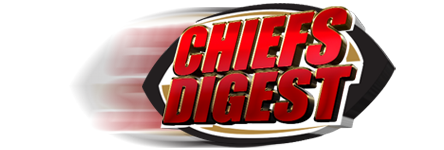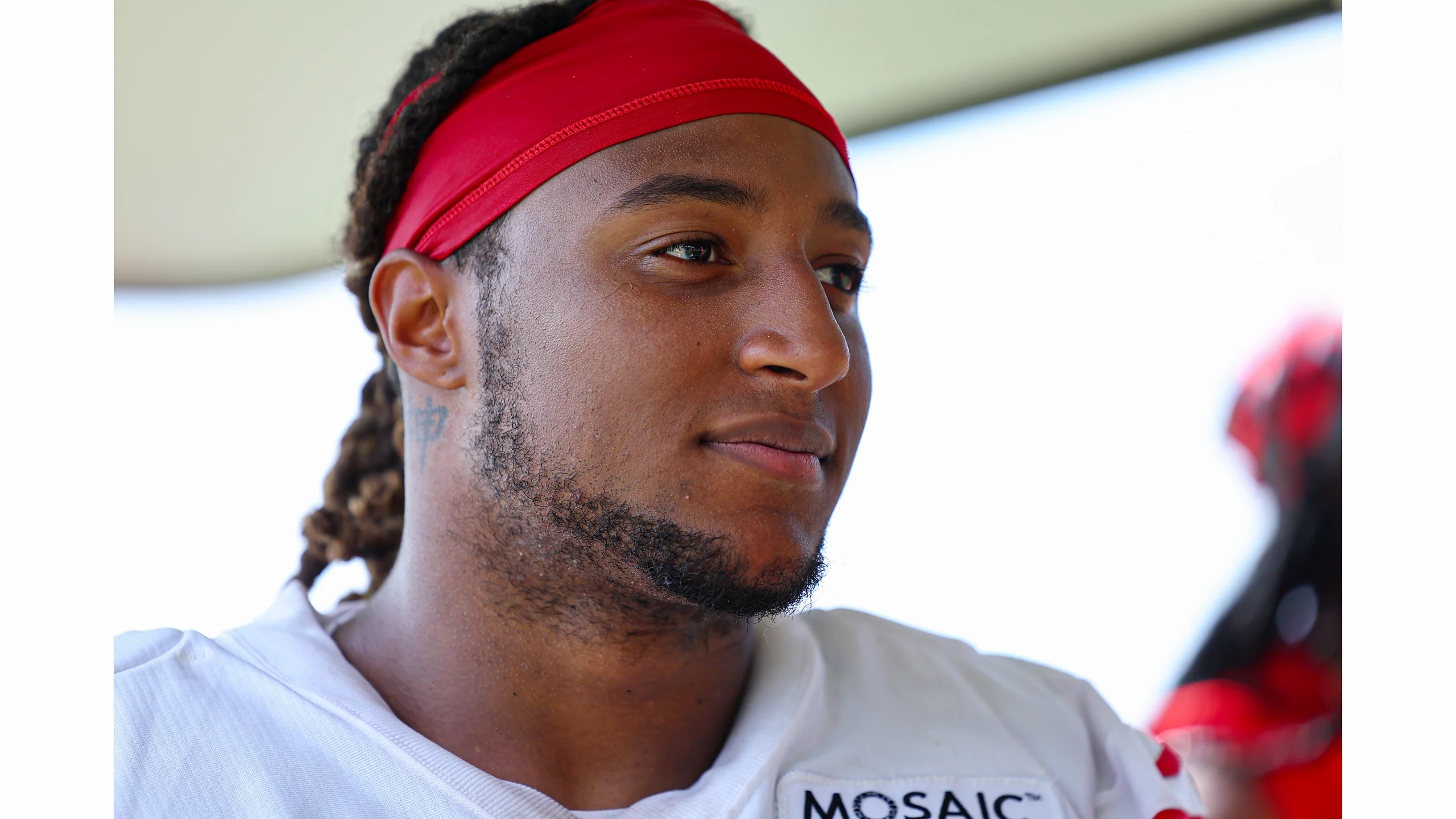Who doesn’t love a good mock draft for their favorite NFL team? In fact, who doesn’t love a bad mock draft for their favorite team?
It’s that time of the season, and if there is anything enjoyable coming from the inevitable AI revolution, it’s that NFL mock draft simulators are better than ever. Any Chiefs fan can put themselves in the chair of general manager Brett Veach and see what decisions they would make if in charge of the future of the AFC champions.
For mock draft No. 1, we’ll be using the Pro Football Network simulator, which offers a solid draft board and one of the better draft pick trading engines around.
The philosophy for the opening mock draft at Chiefs Digest is always the same. Let’s get a feel for the board, the pockets of players that will be available around when the Chiefs have selections, and what trade opportunities may arise. This is a first glance to get a feel for the lay of the land. There will be no trades in this draft, just identifying possibilities for the next simulation.
Round 1, No. 31 overall: DT Walter Nolen, Mississippi
With an array of intriguing choices available, Nolen is a clear choice among the players available at premium positions. The 6-foot-3, 300-pound Nolen, as a 3-tech interior pass rusher, is a potential heir apparent for 30-year-old Chris Jones. He delivered 6 1/2 sacks and 14 tackles for loss last season for Mississippi in earning consensus All-American honors.
The only red marks on the 21-year-old’s resume are “maturity” issues related to his bouncing around high schools, his transfer from Texas A&M to Ole Miss for his junior season, and rumors of frustration during practices. The Chiefs don’t shy away from such players, so long as coaches believe the player is a good teammate and can adapt to a championship culture.
This board fell very well for the Chiefs with other choices available, including Ohio State left tackle Josh Simmons, Mississippi quarterback Jaxson Dart, North Carolina running back Omarion Hampton, Alabama quarterback Jalen Milroe and Boston College edge Donovan Ezeiruaku. That could open the door for interesting trade-down opportunities for Veach.
Trade offers:
• New England offered Nos. 38 and 69 for the Chiefs’ Nos. 31 and 133.
• Chicago offered Nos. 39 and 72 for Chiefs’ Nos. 31 and 133.
• Miami offered No. 48 plus a 2026 second-round pick for Kansas City’s No. 31.
Not a terrible offer from the Dolphins, but sliding to mid-second round is not appealing. The Patriots’ deal upgrades a late fourth to an early third. Unlikely Nolen will be there but other talent will be – and always an opportunity to move up again if necessary. Chicago’s offer is not as good.
Round 2, No. 63 overall: RB Quinshon Judkins, Ohio State
Looking to spark the Kansas City offense? Nothing would add horsepower behind Patrick Mahomes like a workhorse running back, and Judkins fits the bill as well as anyone, coming off three consecutive 1,000-yard seasons while playing in both the SEC and Big Ten. Judkins rushed for 3,785 yards in three years, scoring 45 touchdowns on the ground, averaging 5.46 yards per carry. He also caught 59 passes for 442 yards and five scores.
Standing just 1/2 inch shy of 6 feet tall and registering 221 pounds, Judkins is the template for the body type the Chiefs seek in a running back. His Relative Athletic Score of 9.90 ranked No. 1 among running backs in this year’s class and No. 23 out of 2,106 backs since 1987.

There’s always a risk of taking the “other” player when a school has two stars at the same position, and the Chiefs have experienced that downside. But sharing the backfield with TreVeyon Henderson didn’t diminish Judkins, who was a freshman All-American and twice first-team All-SEC at Mississippi before transferring to the Buckeyes for his junior season. In the national championship victory over Notre Dame, Judkins led both teams with 100 yards rushing and two touchdowns on 11 carries, and also added two catches for 21 yards and a score.
This draft has gone mostly chalk, and Judkins is the best available player on the board. Granted, this is a deep running back class with Kansas State’s DJ Giddens, Arizona State’s Cameron Skattebo, and Kansas’ Devin Neal among those still available.
The temptation to go cornerback here is strong, but with the next pick just three slots away, there’s a significantly better chance of getting the two other players of interest on the board, so the decision is going Judkins here and addressing corner next.
Trade offers:
• Seattle offered No. 64 and No. 236 for KC’s No. 63.
• Giants offered No. 65 and their 2026 third rounder for Chiefs’ No. 63 and their 2026 fourth rounder.
A free seventh-round pick or a huge jump of maybe 60 or more spots next year? In a trade scenario, I’m moving down and taking the upgrade next year from the Giants. KC’s fourth will likely be near the end of the draft again, and the Giants will likely be closer to the front. The uber-aggressive Veach shouldn’t see this as moving back in 2025 but moving up in 2026.
Round 3, No. 66 overall: CB Jacob Parrish, Kansas State
Stop if you’ve heard this before – an undersized cornerback with speed who relishes contact and can inside against the slot. It’s the story of Trent McDuffie, but everything also applies to Parrish. McDuffie is bigger – 5-foot-11 versus 5-foot-10 (almost) – but Parrish is faster (40-yard time of 4.35 seconds versus 4.48). Yet the profiles are very similar in undersized corners who make up for their size with quickness, football IQ, and physicality. Defensive backs coach Dave Merritt should have no problem turning Parrish into a potential day-one starter at nickel.
The road not taken: Receivers Jalen Royals (Utah State) and Jayden Higgins (Iowa State) are intriguing. Other premium position options include Boston College right tackle Ozzy Trapilo and Ohio State edge Jack Sawyer.
Trade offers:
• Pittsburgh offered No. 83 plus their 2026 third and 2026 fourth for No. 66 and KC’s 2026 fourth.
• Denver offered No. 85 and No. 97 for No. 66 KC’s 2026 seventh.
No brainer for me, I would normally take the Steelers’ offer. No. 97 is a third-round compensatory selection, and there’s a chance Pittsburgh’s 2026 third will be in the top half of the round. I’m also betting Pittsburgh’s fourth will be an upgrade from the Kansas City fourth next year, and there’s a decent chance Parrish or another corner I like is available at No. 83. And there is no way the Chiefs are making a trade with the Broncos, since the last one was in 1981.
Round 3, No. 95 overall: Edge Jack Sawyer, Ohio State
Sawyer was in the discussion at choice No. 66, and he’s still available in the third round, providing solid depth at defensive line and specifically on the edge. The 6-foot-4, 260-pound Sawyer tallied nine sacks last season, breaking up seven passes with an interception and forcing three fumbles. He was the Cotton Bowl defensive MVP and a team captain for the Buckeyes while earning second-team all-Big Ten honors.
The Athletic’s Dane Brugler even offered a note in his inimitable draft guide on Sawyer that should resonate with Chiefs fans: “Similar in ways to George Karlaftis, he has the competitive play personality that NFL coaches will welcome as part of their rotation,” Brugler wrote.
Depth remains at cornerback with Zy Alexander (LSU) and defensive tackle with Shemar Turner (Texas A&M), and there are still some offensive tackles that offer promise, such as Charles Grant (Williams & Mary), Logan Brown (Kansas) and Chase Lundt (Connecticut).
Trade offers:
• Pittsburgh offered No. 123 plus their 2026 fourth and 2026 fifth for No. 95 and KC’s 2026 seventh.
• Miami offered No. 98 and No. 253 in exchange for No. 95.
Pittsburgh’s pitch would have to change if I took their earlier deal, and maybe it doesn’t come at all. Miami’s offer isn’t bad, although the Chiefs don’t need another seventh-round pick. Maybe add a 2026 seventh and it’s good.
Round 4, No. 133 overall: OT Chase Lundt, Connecticut
If the Chiefs don’t address offensive tackle in round one, it’s going to remain an option at every selection. The fourth round is truly the last chance for a meaningful move at left tackle, as the Chiefs are without selections in the fifth and sixth rounds.
Lundt fits the bill as a project offensive tackle with huge upside potential. His 6-foot-7, 304-pound frame provides him with strong athleticism, and the 49 starts he had in college give him plenty of experience. He played right tackle in college but worked at left tackle during his draft prep. Even so, the Chiefs need a right tackle in 2026 as a future replacement for Jawaan Taylor. Lundt could certainly solve that dilemma, and on the high side, could challenge at left tackle.
No trade offers came in for this one. There were two other players considered for this spot: Clemson’s Jake Briningstool and Syracuse’s Oronde Gadsden II, both tight ends. While there is still optimism for Jared Wiley coming back from a knee injury in year two, the Chiefs still need to consider life without Travis Kelce.
Round 7, No. 226 overall: DT Ty Hamilton, Ohio State
Round 7, No. 251 overall: S Dante Trader Jr., Maryland
Round 7: No. 257 overall: WR Andrew Armstrong, Arkansas
The only surprise was finding Hamilton still available in the seventh round (Brugler tagged him with a third-round grade and KSHB’s Nick Jacobs with a fourth-round assessment). The 6-foot-2, 299-pound Hamilton is a potential 1-tech nose tackle, which would provide the Chiefs with both an interior pass rusher (Nolen) and a run defender in this draft.
Safety isn’t much of a concern for the Chiefs, especially with Mike Edwards returning, but Trader is undervalued in the seventh round as a potential safety and an ace special-teams performer. He also had good production at Maryland, breaking up 20 passes with five interceptions. He’s also a converted cornerback, which is catnip to the Chiefs.
Armstrong checks the box in providing Mahomes with something he doesn’t have, a long-lanky athlete who can post up and go get the ball at receiver. The 6-foot-3, 204-pound Armstring led the SEC with 1,140 yards receiving last season, averaging 15.3 yards per catch in his college career.
This was a no-trade draft scenario, just an exercise to see one way how the draft could unfold, helping to identify where the pockets of strength in the draft may develop and where trade opportunities exist. I would be surprised if Veach takes three selections in the seventh round and doesn’t use one or more of these choices as sweeteners in another deal or to move up in the seventh or even end of the sixth round.
Lessons Learned
Veach expects to attack the offensive line (specifically tackle), the defensive line (both tackle and edge) and cornerback. Taking an offensive tackle early appears to be a solid strategy with depth at defensive line extending into the second round. Hitting offensive tackle, defensive line and cornerback with the first four selections looks like a winning strategy. If a running back falls later than expected, there’s an opportunity with the late third-round or the fourth-round selection of moving up and striking.
Overall, still pleased with the outcome of this draft. We’ll see how mock draft 2.0 goes next.



